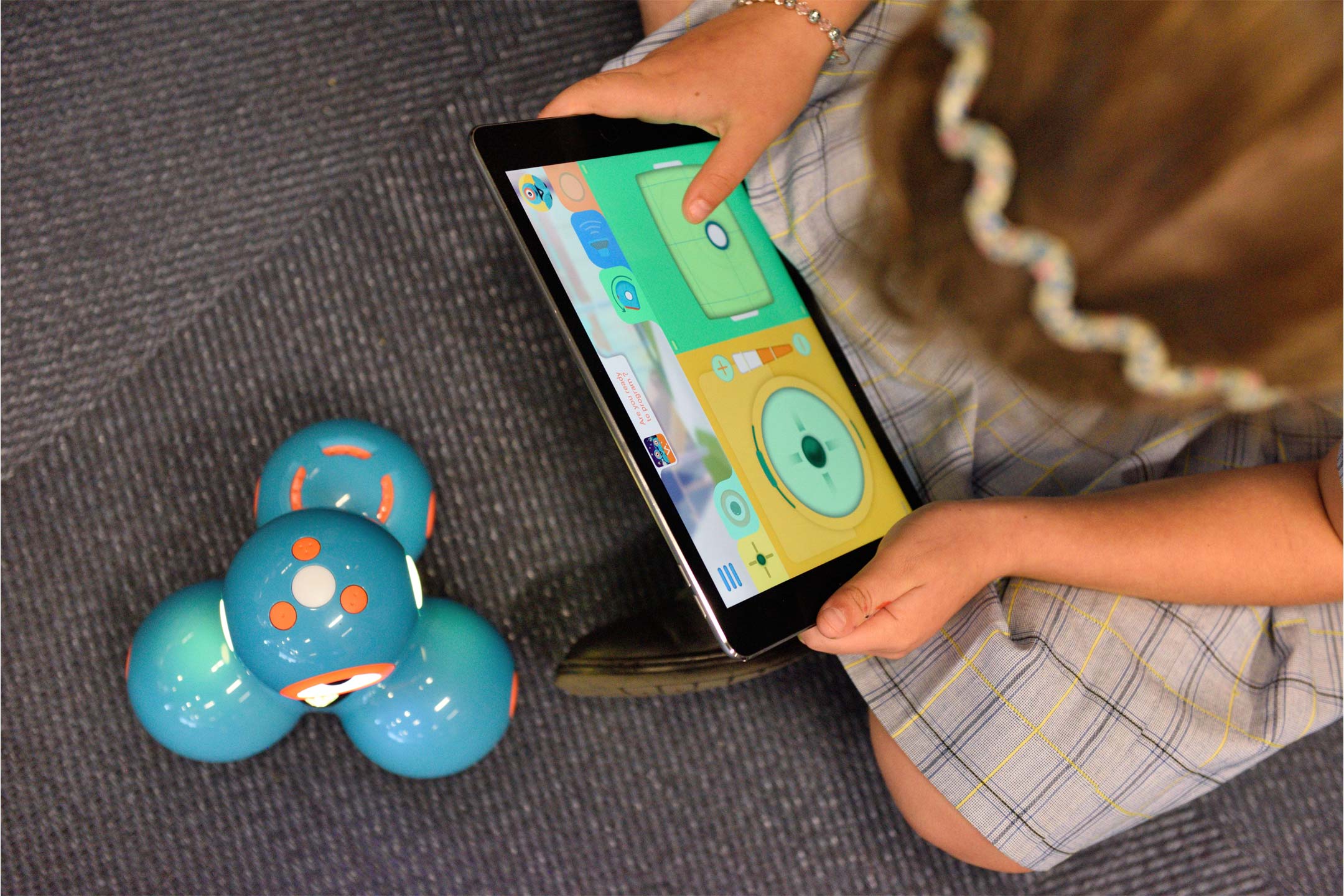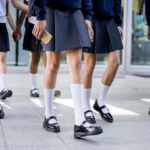
01 May From Struggle to Success: How Tech Is Changing the Game for Kids Who Learn Differently
Karen Brooks examines how a range of technologies and multimedia are being used to help children with both specific and non-specific learning difficulties.
Understanding Learning Difficulties in Today’s Classrooms
Having spent more years than I care to remember in various classrooms and halls of learning, I am continually astonished by the talented and extraordinary people I meet away from these spheres who eventually reveal to me that while they were at school and/or university, they were identified as possessing a ‘learning difficulty’. I’m referring to those diagnosed with ‘disorders’ (for want of a better word) that directly impact upon their ability to process information in a classroom setting. These can take the form of dyslexia, Asperger’s syndrome, aphasia, ADHD, dysgraphia, autism and other learning problems. Beyond these recognised specific learning difficulties, there are also children without a confirmed disability, who don’t respond to the formality of either the classroom or the curriculum, and who exhibit what have been termed antisocial behaviours. These can include anything from being unduly disruptive and confrontational with peers and teachers, to being acutely shy and withdrawn or even unable to sort instructions and the knowledge being taught within the rigid bounds of contemporary pedagogical practices.
History and our celebrity tabloids are littered with stories of those who overcame ‘learning difficulties’ and succeeded despite the odds: Albert Einstein, Pablo Picasso, Richard Branson, Keira Knightley, Orlando Bloom and Tom Cruise, just to name a few. As an academic and someone who provides professional development for teachers, and talks with parents and their children, I also encounter tales of ‘ordinary’ students who struggle with what the rest of us take for granted: a formal education.
Regardless of whether or not a child is identified as possessing a specific learning disability or just simply (to borrow the words of an eight-year-old friend of mine) “hates school”, and is basically uncooperative, there is little doubt that our education system is struggling under the weight of trying to provide a balanced curriculum that meets an increasingly diverse range of student needs.
So, what is being done to help those with both specific and non-specific learning difficulties? More than most people realise.
Support Systems and Gaps in Learning Disability Resources
Among some of the organisations working to improve educational outcomes for students with a range of learning difficulties are the national group SPELD (Specific Learning Difficulties), and Reverend Bill Crews, who is responsible for the Exodus Foundation in Sydney and has been recognised as a National Living Treasure for his work with homeless kids and with improving literacy and numeracy. There are also many celebrity figures and sports stars, as well as countless teachers, parents, authors, illustrators, creative artists, allied health professionals and volunteers who work tirelessly in and out of classrooms to aid children with learning difficulties across the spectrum. Everything that is being done to recognise, intervene and improve educational outcomes is contingent on government funding and, it seems, a great deal of goodwill and energy.
Yet, despite the time, money and resources being dedicated to identifying kids in need and helping them overcome their learning struggles, according to a SPELD NSW survey, it isn’t enough. The survey identified a growing disjunction between government policies surrounding assistance for those with learning difficulties and what occurs in practice. Areas of concern related to early identification of children with learning difficulties and subsequent intervention, the understanding of specific needs, whether related to a disability or not, insufficient resources and training of teaching staff, and inappropriate use of people with specialist training in schools, especially high schools. These are pretty serious gaps, and they appear to be widening.
Furthermore, children who don’t meet the criteria for a recognised diagnosis of ‘learning difficulties’ are often left behind. These can be kids who are classified as ‘slow learners’ or who are perhaps trying to deal with an untenable family situation and ‘act out’ at school, either by withdrawing or through disruptive behaviour. These are the kids who, as Angela Weeks, author of many SPELD publications, sadly acknowledges, “fall through the cracks”. As Weeks points out, when you have a large group of children, some with registered difficulties, it’s not always easy to accommodate the ‘slow learners’, the acutely shy or the downright naughty.
Irrespective of the flaws in the system, once a child is identified as having a recognised learning difficulty, either through official diagnosis or a switched-on teacher who actively seeks to understand what is making life (and education) so hard for a particular student, those interested in helping that child generally know where to turn and to whom.
How Technology and Multimedia Are Transforming Education
Groups such as SPELD, which, working with committed volunteers, teachers, specialists, and parents, are utilising a range of technologies and multimedia, as well as a holistic and inclusive approach to education, are inspirational—as are their results.
Beginning with the premise that what all children possess are ‘learning differences’, as opposed to ‘difficulties’, Angela Weeks and SPELD’s software advisor and tutor, and committed volunteer, Jan Polkinghorne, have embraced the role of popular culture and technology in young people’s lives and turned it to everyone’s educational advantage. Weeks and Polkinghorne have found that introducing multimedia as an intrinsic part of educational praxis levels the psychological playing field for those with learning difficulties, allowing them to both fit in and contribute in meaningful ways to the knowledge environment of the classroom.
Not everyone, however, is so enthusiastic about what is perceived as a technological and non-essential intrusion into a traditional environment, even if it does help students with learning difficulties. Polkinghorne doesn’t beat around the bush when she says those attitudes need to shift fast. She puts it succinctly when she states: “We’re trying to teach 21st-century kids using 18th-century styles. We [the teachers] need to get real.” Weeks concurs. Both women speak from years of experience and the satisfaction of seeing the positive results of their methods. Drawing on young people’s love of the culture they engage with, Polkinghorne and Weeks turn what many parents and teachers consider to be anathema to education to their students’ advantage. For example, using mobile phones and text messaging to start students expressing ideas for an essay; allowing students to borrow MP3 players and audiobooks from the library; using video cameras to capture images that are later embedded in stories and projects; and encouraging students to express themselves and their ideas in blogs. By prompting students to work with the media and technology they’re practically born knowing how to use, education becomes exciting, relevant, and, according to Weeks and Polkinghorne, can even help to overcome the presence of learning difficulties. This is because, as Weeks explains, ideas and content become paramount when assessing tasks, not the form, which can be oral, visual, written or recorded.
Rethinking Education for a Digitally Savvy Generation
But it’s not just those with learning difficulties who benefit from this contemporary and relevant approach to education – all children can and do. This is a view shared by international education experts, such as Henry Giroux who writes: “Learning in the postmodern age is located elsewhere – in the popular spheres, organised around rap music, daytime television, fanzines, Hollywood films, sprawling shopping malls, and computer… culture, that shape young people’s identities through forms of knowledge and desire that are absent from what is taught in high schools. The literacies of the postmodern age are electronic, aural, and image-based…”
Instead of treating television, advertising, music, films, the internet, and so on as enemies, we all—parents, teachers, and other professionals working with young people—need to make them our allies when it comes to educating our kids.
In other words, we need to rethink our notion of education and ways of learning for all, not just for children with learning differences. We need to acknowledge the technological and multi-tasking skills our kids are rapidly acquiring and make them an intrinsic part of the classroom experience. Only when we do that will we escape the shackles of what is fast becoming an antiquated and, in many children’s (and adults’) minds, outdated curriculum, while also including students whose ways of learning differ from those of many of their peers.
The argument to make the curriculum, and all students who study it, more inclusive, to incorporate and value verbal, print, visual and aural educational methods and outcomes equally; to give students assessment options rather than rigid assessment criteria, is not new. However, neither is resistance to such an approach, which continues despite evidence from the UK and the USA suggesting that multimedia classrooms are not simply the way of the future for all children; they’re the way to their future.
Dr Karen Brooks is currently an Honorary Research Consultant in the Centre for Critical and Cultural Studies at the University of Queensland. She lectures in the areas of media, youth, sexuality and popular culture using a psychoanalytical model. She has established both a national and international reputation for her work, and her research and social commentary is regularly published in Australia and overseas.



